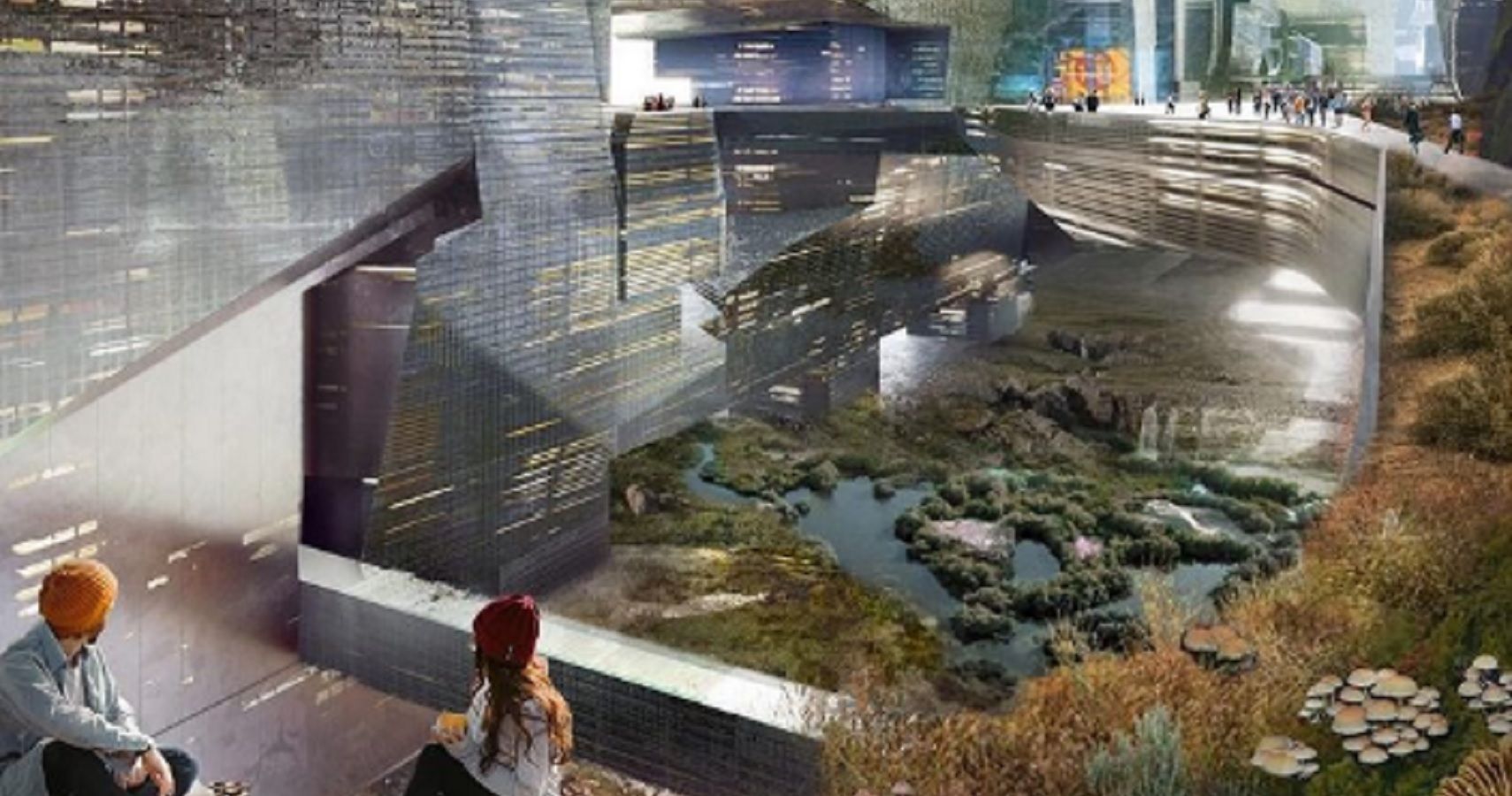Inside Mirror Line: The $1 Trillion Saudi Arabian Skyscraper

As technological advancement rises, so do the living conditions of many wealthy people. From smart cars to smart cities, every single thing is built to enhance living in comfort and style – provided that people can afford it, of course. That’s what the Kingdom of Saudi Arabia intends to do with their proposed $1 trillion mega-city, the Mirror Line. The proposal presents the Mirror Line as the rival to the Dubai’s tallest building, the Burj Khalifa, and the world-class mall beside it.
Plans were made after Saudi Crown Prince Mohammed bin Salman prompted the authorities to develop the land in the region, and when he did, he demanded something that could rival the great pyramids of Egypt. With the blueprints in place, it was decided that it would be part of a desert complex known as Neom – a zero-carbon smart city – which will be starting on the Gulf of Aqaba just east of Egypt’s the Sinai Peninsula.
The project will comprise two reflective glass buildings measuring up to 488 meters (or over 1,600 feet high). They will run parallel to each other for over 120 kilometers (some 75 miles) across various coastal, mountains, and desert terrains. The project aims to connect the two buildings via walkways, and a high-speed train will run underneath the two structures. Moreover, the project is expected to house five million people in a three-tiered urban living community. The tiers will encourage walking in these interconnected luxurious neighborhoods, as no cars or streets will be built inside the mega-city.
People living there will have all of their needs readily available to them within a ten-minute walk. Some of the concepts and designs include vertical farming, where crops will be grown in vertically stacked layers in a controlled environment. It will also add an artificial ski resort, a marina for yachts that will lie underneath an arch between the two buildings, and a sports stadium standing up to 1,000 feet above the ground. Robots and various A.I. will assist the people living inside the metropolis for their comfort and entertainment. Once the municipality is finished, it is projected to be as large as the U.S. state of Massachusetts.
The tiered design for the city itself was planned so it could challenge the traditionally flat and horizontal cities. The Kingdom also wanted to create a metropolis model that could help preserve nature and encourage enhanced living conditions for many. More than that, though, the Kingdom’s Crown Prince conceived the trillion-dollar city so he could diversify the country’s economy and somewhat liberate it from its reliance on oil. With this project, the Kingdom of Saudi Arabia wants to attract foreign investment, create more jobs for the people, and help stabilize their economy. However, the project wasn’t met without challenges. In 2018, many Western countries, companies, and foreign investors started boycotting the Kingdom, and its Crown Prince Mohammed, because of its recorded human rights violations, including the supposed murder of journalist Jamal Khashoggi by Saudi Arabian operatives.
This pseudo-embargo ended when a high-profile summit between Prince Mohammed and U.S. President Joe Biden occurred. The U.S. President confronted Prince Mohammed about the killing of the journalist. It is where the two world leaders aimed to reset their international relations and urge the Kingdom to help control the ever-growing oil prices. This meeting paved the way for more foreign investors to look at the planned metropolis. Additionally, the Kingdom is enjoying an enormous windfall from the high-oiled prices, which allowed Prince Mohammed to greenlight his extravagant projects, including the Mirror Line.
The Line, a very ambitious plan for the Kingdom, is said to finish construction by 2030 after the Crown Prince’s national transformation plan has taken place. However, its engineers have reported that such a massive project could take over five decades to complete since they also have to resolve many challenges, including how to manage the migration of millions of birds across the Mirror Line’s intersecting corridors. In addition, after initial impact assessments, the development team concluded that people might be concerned about living close to others, considering the events that transpired after the global pandemic.
There was also the issue over its size, with some engineers saying that the structure itself would alter the dynamics of the groundwater flow in the desert and restrict the natural movement and migration patterns of birds and other land animals. That’s because if the Mirror Line is fully completed, it will run from the Gulf of Aqaba, bisect a mountain range, and will continue going east through a mountain resort and a complex housing before finally reaching the desert plains. This entire city will span more than 105 miles once successfully built. After its construction, the mega-city will be an unrivaled marvel for the rest of the world to see.
Sources: National Interest Org, The Wall Street Journal, Aljazeera
from TheRichest - Feed https://ift.tt/cJDBtKy

Post a Comment